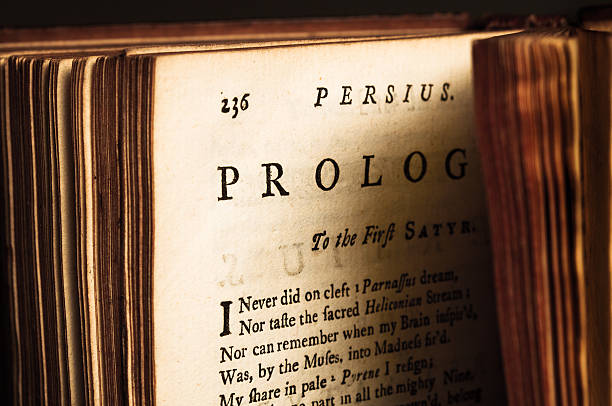How To Describe A River In Writing (10 Best Ways)
How To Describe A River In Writing
How To Describe A River In Writing: Embarking on the art of describing a river in writing is akin to setting sail on a literary voyage where words become the oars that navigate the currents of imagination.
A river, with its meandering flow and dynamic personality, presents a rich tapestry for writers to explore and convey to readers.
This guide is an invitation to delve into the intricacies of capturing a river’s essence through the written word. From the visual poetry of its scenic landscapes to the melodic cadence of its flow, we will embark on a journey to unravel the techniques that breathe life into the river on the page.
Whether it’s the rhythmic dance of water, the seasonal metamorphosis, or the historical whispers carried in its currents, this guide aims to be a compass for writers navigating the fluid and ever-changing landscape of river descriptions.
So, let the words flow like a tributary, and let’s embark on a literary exploration of how to vividly describe a river.
How To Describe A River In Writing
Describing a river in writing involves capturing its sensory details and conveying the overall experience. Here is a step-by-step process on How To Describe A River In Writing:
Observation
Begin by closely observing the river. Take note of its size, width, and flow. Pay attention to the surrounding landscape, such as the banks, vegetation, and any notable features.
Sensory Details
Describe the sensory elements of the river. Discuss the sounds it makes, whether it’s a gentle babble or a roaring cascade. Note the smells associated with the river, such as the freshness of the water or the earthy scent of the surroundings.
Visual Imagery
Use vivid and descriptive language to paint a picture of the river. Discuss the color of the water, the reflections, and the play of light on its surface. Mention any wildlife or boats that may be present.
Emotional Tone
Consider the emotional tone you want to convey. Does the river evoke a sense of tranquility, adventure, or mystery? Tailor your language to reflect the mood you want the reader to experience.
Temporal Elements
Address the river’s changing nature over time. Describe how it may alter with the seasons, the time of day, or in response to weather conditions. Mention any observable patterns in its behavior.
Comparisons and Metaphors
Enhance your description by using comparisons and metaphors. For example, you might liken the river to a silver ribbon winding through the landscape or describe its movements like a dancer gracefully gliding.
Human Interaction
If applicable, include any human elements related to the river. This could involve people fishing, boating, or simply enjoying the riverbanks. Consider how human presence adds to the overall scene.
Historical or Cultural Context
If the river has historical or cultural significance, incorporate relevant details. Discuss any stories, legends, or events associated with the river that contribute to its character.
Flow and Movement
Focus on the river’s dynamic qualities. Describe how it moves, whether it’s a fast-paced cascade or a meandering flow. Use words that convey a sense of rhythm and energy.
Conclusion
Summarize your overall impression of the river. Tie together the sensory details, emotions, and unique characteristics you’ve highlighted, leaving the reader with a lasting and evocative image of the river.
Remember to engage the reader’s senses and emotions throughout the description to create a rich and immersive portrayal of the river.
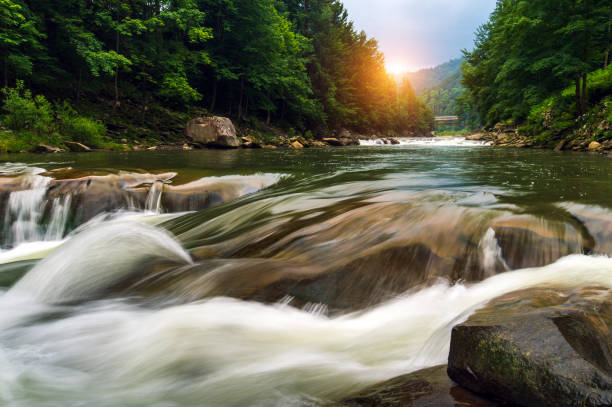
Understanding the River
Understanding the river is like deciphering nature’s ancient poetry, written in the fluid dance of currents and the rhythmic song of water against stone.
It’s more than a mere geographical entity; it’s a living, breathing storyteller, weaving tales of time and transformation.
To comprehend the river is to unlock the secrets of its meandering journey, tracing the contours of its banks like the lines on an aged palm, each curve narrating a chapter of its history.
It is a symphony of liquid notes, a whispering oracle that reveals the eons it has witnessed. So, dive into the river’s embrace, let its essence seep into your senses, and unravel the enigmatic prose that flows within its ever-changing waters.
Understanding the river is an invitation to immerse yourself in the ceaseless narrative of nature, a journey where every ripple is a word, and every bend is a punctuation mark in the lyrical composition of existence.
Researching the specific river
Embarking on the journey to research a specific river is akin to opening a treasure chest filled with geological gems, historical artifacts, and ecological wonders.
This meticulous exploration is not merely about locating a body of water on a map; it’s a quest to unravel the river’s identity, tracing its sinuous path through time and terrain.
Delve into the geographical intricacies, where coordinates tell tales of landscapes shaped by nature’s artistry. Unearth historical footprints, discovering the river’s role in the chronicles of human civilization, from ancient civilizations to modern societies.
Navigate the depths of unique features, be they waterfalls cascading like liquid silk or meandering stretches that carve a serpentine narrative through valleys.
In researching a specific river, you embark on an intellectual adventure, peeling back layers of knowledge to reveal a rich tapestry woven by the intersection of water, land, and the human experience.
Sensory Imagery
Sensory imagery is the painter’s palette of words, a literary kaleidoscope that invites readers to not just see, but to taste the vibrant hues of a narrative, to hear the symphony of words, and to touch the textures woven into the fabric of a story.
It’s the art of crafting prose that transcends mere description, immersing the audience in a world where they can feel the crisp breeze on their skin, taste the tang of salt in the air, and hear the whispers of leaves in the moonlit stillness.
Sensory imagery isn’t just about sight; it’s a multisensory feast that transports the reader beyond the page and into the very heart of an author’s imagination.
It’s the difference between reading about a river and feeling the cool, refreshing embrace of its waters, a literary alchemy that transforms words into an immersive sensory symphony.
Visual Descriptions
Visual descriptions are the kaleidoscopic brushstrokes that bring a narrative canvas to life, inviting readers into a world painted with words.
It’s not merely about recounting what meets the eye; it’s an intricate dance of details that stitches together the visual tapestry of a scene.
The play of light and shadow, the myriad colors that dance across a landscape, and the intricate details that escape casual glances – visual descriptions encapsulate the essence of a place, freezing moments in time with the precision of a masterful artist’s stroke.
It’s the sparkle of sunlight on a river’s surface, the rustle of leaves caught in a breeze, and the panoramic sweep of a mountain vista that, when articulated, transport the reader into the very heart of the depicted scene.
Visual descriptions are the magic ink that transforms the mundane into the extraordinary, making the written word a portal to worlds where imagination and reality seamlessly converge.
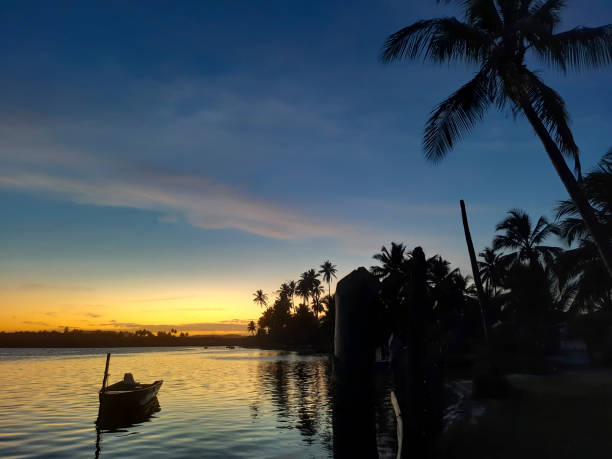
Auditory Descriptions
Auditory descriptions compose the lyrical soundtrack of a narrative, weaving a tapestry of sound that resonates with readers on a visceral level.
Beyond the visual, they plunge into the unseen symphony of the environment, capturing the rustle of leaves in a gentle breeze, the rhythmic percussion of raindrops on a tin roof, or the harmonious chorus of birds greeting the dawn.
Auditory descriptions evoke emotions and memories, painting scenes with the sounds that define them. It’s the crackling of a bonfire, the distant hum of city life, or the serene silence of a snowfall.
Through carefully chosen words, auditory descriptions not only enrich the sensory experience but also serve as a conduit to the soul of a setting, allowing readers to immerse themselves in the rich, evocative soundscape of a story.
They transform written language into a symphony, where each word resonates like a note, creating a composition that lingers in the reader’s mind long after the last page is turned.
Utilizing Figurative Language
Utilizing figurative language in writing is akin to adding a dash of cosmic stardust to the ordinary alphabet. It’s the celestial ballet of metaphors and similes pirouetting across the page, turning prose into a constellation of vivid images that defy the gravitational pull of mundanity.
Metaphors are the warp and weft of storytelling, weaving the fabric of imagination, while similes are like the secret handshakes between words, forging unexpected connections.
Personification breathes life into the inanimate, making the moon a clandestine confidante and the wind a mischievous trickster.
Figurative language isn’t just a linguistic flourish; it’s a literary alchemy that transmutes words into a realm where the mundane becomes magical, and the ordinary is imbued with an extraordinary sparkle.
In the symphony of storytelling, figurative language is the crescendo that elevates prose to a celestial sonata, where every sentence is a constellation waiting to be discovered.
Metaphors and Similes
Metaphors and similes are the sorcerers of language, conjuring a spell that transforms the mundane into the extraordinary.
Metaphors are the hidden bridges between disparate worlds, seamlessly blending the tangible and the abstract, allowing readers to traverse from the known to the sublime.
They’re the poetic shortcuts that paint vivid landscapes with a single brushstroke, turning a simple raindrop into a liquid diamond or a sunset into a molten palette of dreams.
Similes, on the other hand, are the comparisons that twinkle like stars in the literary firmament, illuminating the text with their celestial glow.
Like metaphorical constellations, they guide readers through the vast expanse of imagination, making the unfamiliar feel like an old friend.
Together, metaphors and similes breathe life into language, infusing it with a poetic resonance that transcends the boundaries of mere description, and in doing so, they invite readers to dance on the tightrope between reality and reverie.
Personification
Personification is the literary enchantress, weaving the spell that animates the inanimate, bestowing the ordinary with an extraordinary pulse.
It is the art of breathing life into the lifeless, granting human qualities to the elements of nature or everyday objects.
When personification takes the stage, the wind becomes a mischievous whisperer, the sun a benevolent storyteller, and the mountains stoic guardians of ancient tales.
It transforms the mundane into the magical, allowing readers to see the world through the eyes of a benevolent creator, where even the smallest pebble might harbor secrets and the moon may be privy to silent confessions.
Personification transcends mere description; it is an alchemical process that infuses the narrative with a touch of the fantastical, making the reader not just a spectator but a participant in a whimsical dance between the tangible and the imaginative.
Describing Movement and Flow
Describing movement and flow in writing is like capturing the elusive choreography of nature’s ballet. It’s more than just words on a page; it’s a dance of sentences pirouetting through the air, capturing the essence of rivers that waltz over rocks and breezes that tango through the leaves.
The narrative becomes a river itself, flowing seamlessly, cascading down the paragraphs with the grace of a waterfall. The movement is not just about the physical; it’s the ebb and flow of emotions, the undulating rhythm of a story’s heartbeat.
It’s the fluidity of words that mimic the current, taking readers on a literary voyage where every sentence is a ripple and every paragraph a whirlpool of imagination.
Describing movement is the art of making words fluid, inviting readers to wade into the stream of prose and be swept away by the current of storytelling.
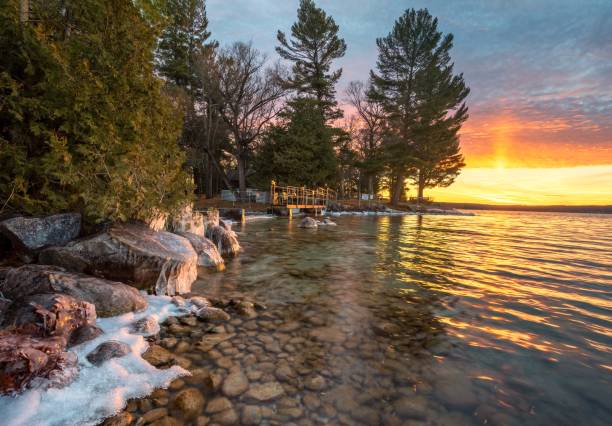
Conveying the speed and rhythm of the river
Conveying the speed and rhythm of the river is like transcribing the heartbeat of nature onto the parchment of language.
It’s an intricate dance, where words become the choreographers, orchestrating the lively tempo of the water’s journey.
The river, at times, moves with the urgency of a sprinting gazelle, its currents racing downstream in a fervent rush. Other moments unveil a more languid cadence, as if the river were savoring the poetic pauses between each ripple.
Describing the speed and rhythm becomes a symphony of adjectives and adverbs, as one tries to encapsulate the fluidity of the river’s movement.
It’s a poetic endeavor that requires the finesse of a conductor, aligning each phrase to the rhythm of the water’s melody, inviting readers to feel the pulse of the river’s timeless song.
Detailing changes in current and water dynamics
Detailing changes in current and water dynamics is akin to narrating the river’s own evolving biography, written in the nuanced language of its movements.
It’s a story of twists and turns, where the currents perform a ballet of metamorphosis, transforming from tranquil whispers to turbulent roars.
Describing the subtle shifts in water dynamics requires the precision of a cartographer, mapping the ebb and flow as the river meanders through the topography of its own narrative.
A sudden acceleration might echo the heartbeat of a storm, while a gentle eddy could mirror the reflective pauses in the passage of time.
It’s an art of observation that goes beyond the surface, delving into the depths where eddies become whispers of submerged secrets and rapids echo the spirited rebellion of the river against the constraints of the landscape.
Detailing these changes is an invitation for readers to embark on a journey through the ever-changing script of water, where every ripple pens a new chapter in the fluid story of nature.
Exploring the impact of weather on the river’s behavior
Exploring the impact of weather on the river’s behavior unveils the river’s dynamic dialogue with the atmospheric elements, as if it were a poetic dance partner in the ever-changing ballroom of nature.
Weather is the maestro orchestrating the river’s performance – a torrential downpour transforms the river into a roaring maestro, conducting a thunderous symphony as it swells and surges.
In contrast, the gentle touch of sunlight might coax the river into a languid ballet, its waters shimmering like liquid gold.
Frosty mornings may cloak the riverbanks in an ethereal silence, while gusty winds become the river’s enthusiastic partner, whisking away whispers from its surface.
It’s a symbiotic relationship where the river becomes the weather’s canvas, painting its emotional response across the landscape.
Exploring these meteorological nuances is to decipher the river’s atmospheric sonnet, where raindrops become stanzas and sunshine transforms into verses, etching a narrative that transcends the mere ephemerality of weather.
Addressing Seasonal Changes
Addressing seasonal changes in the life of a river is akin to witnessing a kaleidoscopic metamorphosis orchestrated by Mother Nature herself.
Each season arrives as a masterstroke, transforming the river’s character and scenery with a cinematic flair. In winter, the river dons a tranquil cloak of stillness, its waters hushed beneath a crystalline tapestry of ice, while spring brings a vibrant crescendo, awakening the river with the exuberance of new life and a symphony of melodic flows.
Summer sees the river assuming the role of a refreshing oasis, inviting sun-dappled adventures, while autumn paints the scene in a palette of fiery hues, the river mirroring the vibrant foliage in a breathtaking dance of reflection.
Addressing seasonal changes is akin to penning verses in a celestial diary, where each chapter is a poetic ode to the river’s perennial reinvention, echoing the harmonious cadence of time and the eternal rhythm of nature’s cyclical ballet.
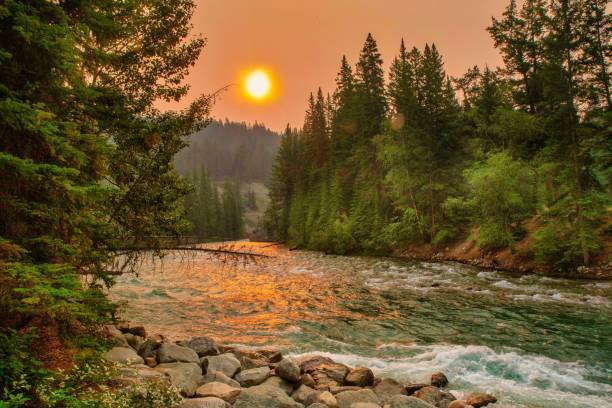
Describing the river in different seasons
The river, a transient maestro of nature’s symphony, undergoes a captivating metamorphosis with each passing season.
In winter, the river surrenders to the frost’s embrace, transforming its liquid expanse into a silent tableau of ice sculptures, as if the very essence of its flow were suspended in a crystalline dream.
Spring breathes life back into its veins, a rebirth echoed in the babbling currents and the vibrant bloom that adorns its banks. Summer sees the river donning a robe of effervescent activity, its waters becoming a haven for sunlit reflections and playful ripples, inviting laughter and leisure along its shores.
As autumn paints the landscape with a kaleidoscope of hues, the river becomes a canvas, mirroring the fiery foliage with a reflective grace.
Each season is a chapter in the river’s cyclical narrative, a testimony to the profound connection between this aqueous storyteller and the ever-changing tapestry of the natural world.
Historical and Cultural Context
Navigating the historical and cultural currents that intertwine with a river is like embarking on an archaeological voyage where each ripple conceals a chapter of human civilization.
The river, more than a waterway, is a time-traveling bard, whispering tales of bygone eras along its serpentine course.
Its banks have witnessed the footprints of ancient civilizations, the echoes of battles lost and won, and the silent narratives of cultural rituals that have ebbed and flowed like its waters.
The river is not just a geographical entity; it’s a living museum where the sediment of history settles, and the echoes of diverse cultures resonate.
From the rituals performed on its shores to the bridges built to span its currents, the river is an archaeological text written in water, inviting intrepid explorers to decode the layers of human heritage etched into its banks and bed.
In understanding the historical and cultural context of a river, one becomes not just a reader of its stories but a custodian of the submerged narratives that shape its aquatic identity.
Crafting a Narrative
Crafting a narrative is akin to wielding a quill dipped in the ink of imagination, where each stroke becomes a ripple in the river of storytelling.
It’s not merely about stringing words together but about conjuring a world where sentences dance and paragraphs hum with the energy of a thousand tales waiting to be told.
Like a river carving its path through landscapes, a narrative meanders through the topography of characters, plot twists, and settings, sculpting a literary terrain that invites readers to embark on a journey of discovery.
The storyteller, akin to a river guide, directs the flow of words, creating currents of suspense, pools of emotion, and deltas of revelation.
Crafting a narrative is not just a literary endeavor; it’s a sacred act of world-building, where ink becomes the architect and words the bricks that construct realms where readers willingly drown and emerge forever changed.
Building a story around the river
Building a story around the river is like composing a symphony where the water is both the conductor and the protagonist.
The river becomes more than a backdrop; it evolves into a dynamic character, whispering its own secrets and shaping the destinies of those who dwell along its shores. The narrative flows and meanders, mirroring the undulating currents of the river itself.
Characters navigate its bends, face the rapids of challenges, and find solace in its tranquil pools. The river is not merely a setting but a narrative force, influencing the plot’s tempo with its seasonal changes, reflecting the characters’ emotional ebbs and flows.
It weaves itself into the very fabric of the story, becoming a living, breathing entity that propels the plot forward like a force of nature.
In building a story around the river, the writer becomes a navigator, steering through the narrative waters to unveil the secrets and stories hidden within its fluid embrace.
Editing and Refining
Editing and refining are the alchemical processes that transform raw literary ore into a gleaming narrative masterpiece.
It’s not a mere dissection of words; it’s a surgical art, where each incision breathes new life into the prose. Like a sculptor chiseling away excess stone to reveal the statue within, editing carves precision from the rough-hewn blocks of sentences.
It’s a dance of discernment, where unnecessary words are shed like autumn leaves, allowing the core story to emerge in its unadulterated brilliance.
Refining is the crucible in which ideas meld, sentences polish, and the narrative’s luster is brought to a high gloss.
It’s not just about fixing; it’s about elevating the manuscript to the realm of literary refinement.
In the crucible of editing, the story is not merely revised but reborn, emerging from the crucible with a shine that beckons readers like a beacon in the vast sea of written expression.
Frequently Asked Questions (FAQ) about How To Describe A River In Writing
How can I make my river descriptions more vivid and evocative?
Dive into sensory details – paint with words to capture the river’s visual, auditory, and tactile dimensions. Enrich your descriptions by incorporating the nuanced elements that make the scene come alive.
What role does figurative language play in describing a river?
Figurative language, like metaphors and similes, is the secret sauce. It transforms your descriptions from mundane to magical, creating imaginative connections that resonate with readers and bring the river to life in unexpected ways.
How do I convey the river’s changing dynamics over different seasons?
Each season is a character in the river’s story. Explore the dance between the river and the seasons, detailing the shifts in mood, color, and atmosphere. Use the changing backdrop to infuse your descriptions with depth and variety.
Why is it important to consider the historical and cultural context of a river?
A river is a silent witness to history. Weaving in historical and cultural elements adds layers to your narrative, connecting the river to the broader human experience and providing a richer backdrop for your descriptions.
How can I create a narrative around the river without it feeling forced?
Let the river be a character with agency. Allow it to influence the plot, characters, and emotions. Building a story around the river should feel natural, as if the water itself is guiding the course of your narrative.
What’s the significance of editing and refining when describing a river?
Editing is the refining process that polishes your prose into a literary gem. It’s about precision – chiseling away excess, streamlining sentences, and ensuring each word contributes to the river’s vivid portrayal. Refinement elevates your writing from good to extraordinary.
How can I balance vivid descriptions with concise writing?
Strike a balance between lush descriptions and concise language. Focus on the most impactful details that convey the essence of the river. Less can be more, allowing readers to engage their own imagination in filling in the gaps.
What’s the best way to ensure my river descriptions resonate emotionally with readers?
Infuse your descriptions with emotion. Connect the river to human experiences, making it a mirror for the reader’s feelings. Whether it’s serenity, awe, or nostalgia, evoke emotions that create a lasting impact.
Can you provide tips for crafting a compelling introduction to a river description?
Begin with an enticing hook that draws readers into the river’s world. Consider using vivid imagery, intriguing metaphors, or posing a thought-provoking question. The introduction sets the tone for the entire descriptive journey.
How can I receive constructive feedback on my river descriptions?
Join writing communities or workshops where you can share your work. Constructive feedback from peers can offer valuable insights and different perspectives, helping you refine and enhance your river descriptions.
Conclusion
In the art of How To Describe A River In Writing, the journey is as enriching as the destination. The words we choose to weave into the tapestry of rivers shape not just the scenery but the very essence of our narratives.
From the visual panoramas to the nuanced dance of currents, we’ve explored the tools that transform descriptions into immersive experiences.
As we conclude this exploration, remember that the river is not just a backdrop but a dynamic protagonist in the stories we tell.
The seasons, history, cultural context, and the river’s own narrative arc are threads in the literary fabric we create.
Editing and refining serve as the final brushstrokes, refining our prose into a masterpiece that resonates emotionally.
May your future descriptions of rivers flow with the vitality and grace of the waters they depict, inviting readers to embark on a journey where words become the vessel navigating the meanders of imagination.






